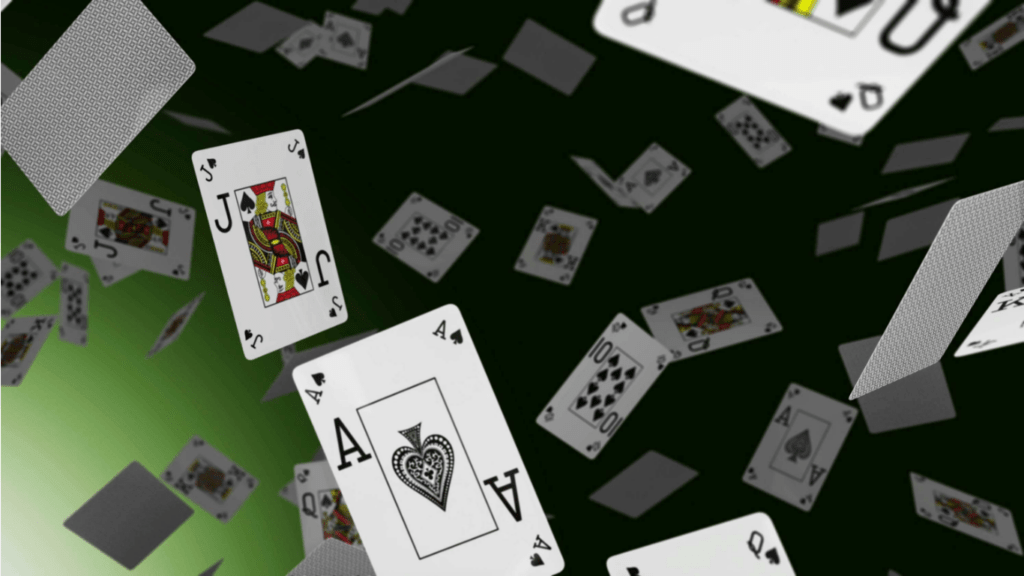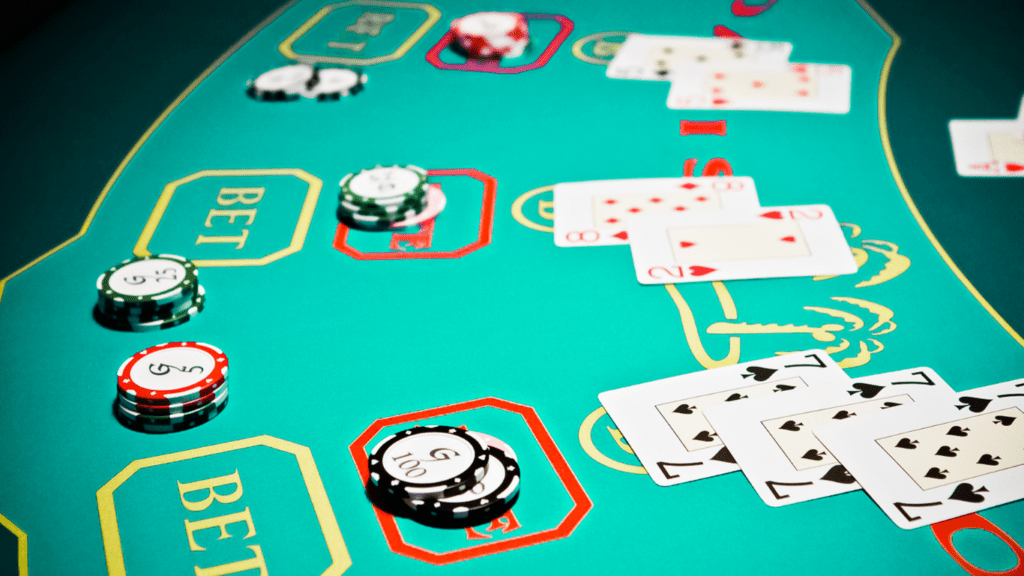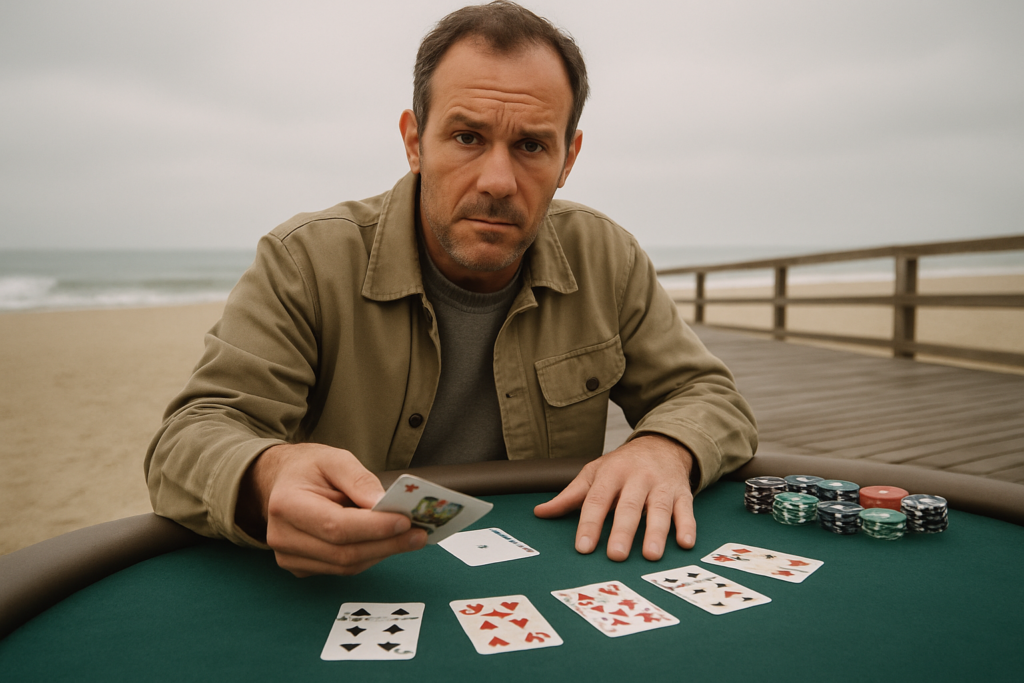Understanding the Basics of Blackjack
Blackjack, a popular casino game also known as 21, has simple rules that players can grasp quickly. The primary goal is to have a hand value closer to 21 than the dealer’s without exceeding it. Each card carries a point value: number cards are worth their face value, face cards are worth 10 points each, and aces can be worth 1 or 11 points. A hand with an ace and a 10-point card is called a “blackjack,” which typically guarantees an immediate win if the dealer doesn’t have one.
In every round, players and the dealer receive two cards each. Players can choose to “hit” and take another card or “stand” to keep their current hand. Other strategic options include “double down” and “split,” which offer opportunities to adjust bet sizes or separate paired cards into different hands.
The dealer acts last, guided by specific rules: drawing cards until reaching at least 17. This aspect increases the predictability of the dealer’s hand. Understanding these rules, players can start developing strategies around blackjack odds and probabilities.
Blackjack involves more than chance. It’s the blend of strategy and understanding probability that defines success. Recognizing the dealer’s constraints, players can make more informed choices, turning the game’s mechanics to their advantage. By internalizing the game’s structure, players are better positioned to employ mathematical concepts, such as probability, to improve their gameplay.
The Role of Probability in Blackjack
Understanding probability’s impact on blackjack enhances strategic decision-making. Grasping probabilities can significantly improve how players approach each hand.
Probability of Winning Hands
- In blackjack, knowing the probability of winning a hand is crucial.
- Every card dealt changes these probabilities.
- The chance of drawing a specific card from a standard 52-card deck is calculated by dividing the number of each card type by the total cards remaining.
- Probabilities also allow players to assess whether hitting or standing offers better chances.
House Edge and Its Impact
The house edge represents the statistical advantage the casino holds over players. This edge arises from specific rules favoring the dealer, such as acting after players and the probability of players busting first. For example, if the house edge is 0.5%, over time, the casino expects to gain 50 cents for every $100 wagered. Minimizing this edge through strategic decisions like basic strategy can significantly impact long-term results.
Analyzing Blackjack Odds
Understanding blackjack odds sharpens my game strategy by revealing the probability behind each decision. Recognizing these odds helps me make choices that minimize the house edge.
Odds of Different Combinations
In blackjack, each card combination carries distinct odds. For instance, the probability of being dealt a natural blackjack, which is an Ace and a 10-value card, is about 4.83%. When drawing a card during a hit, the chance of improving my hand decreases as more low-value cards appear. Knowing these odds guides my decision to hit or stand. Additionally, when considering doubling down, I assess the odds of getting a beneficial card to maximize potential winnings.
Impact of Deck Size on Odds
Deck size significantly influences the odds in blackjack. Using a single deck, I find that natural blackjacks occur slightly more frequently compared to multiple decks due to a higher proportion of 10-value cards. However, casinos often use multiple decks, increasing the total number of cards and altering odds, slightly favoring the house. By understanding how deck size affects probability, I adjust my strategy, considering these nuanced odds to improve my play.
Strategies to Improve Winning Chances

Enhancing your blackjack gameplay relies on using calculated strategies. Understanding and applying the right techniques can shift odds in your favor.
Basic Strategy
Mastering basic strategy is fundamental to improving your chances in blackjack. Basic strategy provides a mathematically optimal way to play every hand based on your cards and the dealer’s visible card. This strategy minimizes the house edge to less than 1% in most situations.
- Decision Tables: I always refer to decision tables, which tell me when to hit, stand, double down, or split. These tables are based on millions of hands simulated by computer programs.
- Dealer’s Card: My moves are influenced heavily by the dealer’s upcard. For instance, I’ll stand on a hard 12 against a dealer’s 4, 5, or 6 but hit if they show a 7 or higher.
- Soft Hands: With a soft 18 (an Ace and 7), I typically stand against a dealer’s 2, 7 or 8, but I’ll double down against 3 to 6 if allowed.
Card Counting Techniques
Card counting helps achieve more informed betting decisions by tracking the ratio of high to low cards left in the deck. This doesn’t require memorizing all played cards but instead assigning them values to gauge the deck’s composition.
- High-Low System: I employ the Hi-Lo system, where each card is given a value. Cards 2-6 are +1, 7-9 are 0, and 10-Ace are -1. By keeping a running count, I can determine when the deck favors the player.
- True Count: To adjust for multiple decks, I convert my running count to a true count by dividing it by the number of remaining decks. Higher true counts mean a higher likelihood of blackjack, so I increase my bets accordingly.
- Betting Adjustments: When my true count rises above 2, I begin making larger bets, understanding that more high-value cards increase my odds of achieving a 21 or a strong hand value.
Using these strategies systematically and practice will undoubtedly boost your proficiency and edge in blackjack sessions.
Mathematical Models and Simulations
Analyzing blackjack through mathematical models and simulations reveals insights into effective strategies. I examine how computer-generated models assist in decision-making and explore their practical applications in gameplay enhancement.
Computer Simulations
Computer simulations generate numerous blackjack scenarios, allowing for detailed analysis of strategies. By running millions of hands, these simulations provide statistically reliable data on the long-term effectiveness of various gameplay tactics. For example, simulations can assess how often certain card combinations succeed or determine the likelihood of winning when a player holds a specific hand value. By adjusting variables like deck size or dealer rules, simulations can highlight how these aspects influence outcomes. These insights guide players in refining strategies to maximize their winning potential.
Practical Applications
Mathematical models and simulations translate into real-world benefits during gameplay. Armed with data-driven insights, I adapt my strategy based on the simulation results. For instance, understanding the impact of an aggressive versus conservative play style in different scenarios helps me to anticipate shifts in odds. Additionally, recognizing the optimal times to employ techniques like card counting or basic strategy adjustment sharpens my tactical decisions. Applying these experiences gained from simulations in actual casino settings boosts my confidence and precision in real-time decision-making.



 Lead Content Strategist
Willie Maxson is the Lead Content Strategist at Dice Gamblers Deal, where he leverages his extensive knowledge of gambling and content creation to produce educational and engaging material for players at all skill levels. Willie’s background in journalism, combined with a deep understanding of casino games, allows him to break down complex gambling strategies into clear, digestible content that helps readers master the art of winning at the tables. From detailed blackjack strategies to the best slot machine tips, Willie creates resources that provide valuable insights into the world of gambling. His approach is centered around making learning fun and accessible, with content that’s as enjoyable as it is informative. He works closely with the team to ensure that every article, guide, and update on the website is of the highest quality, empowering players to make more informed decisions and ultimately increase their winnings.
Lead Content Strategist
Willie Maxson is the Lead Content Strategist at Dice Gamblers Deal, where he leverages his extensive knowledge of gambling and content creation to produce educational and engaging material for players at all skill levels. Willie’s background in journalism, combined with a deep understanding of casino games, allows him to break down complex gambling strategies into clear, digestible content that helps readers master the art of winning at the tables. From detailed blackjack strategies to the best slot machine tips, Willie creates resources that provide valuable insights into the world of gambling. His approach is centered around making learning fun and accessible, with content that’s as enjoyable as it is informative. He works closely with the team to ensure that every article, guide, and update on the website is of the highest quality, empowering players to make more informed decisions and ultimately increase their winnings.